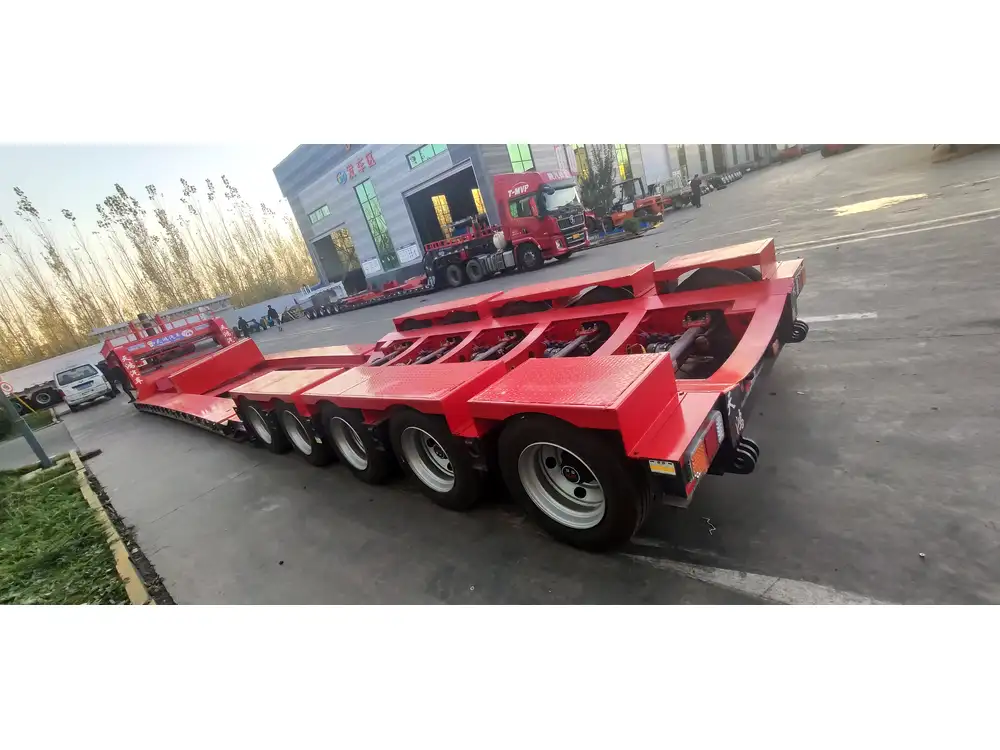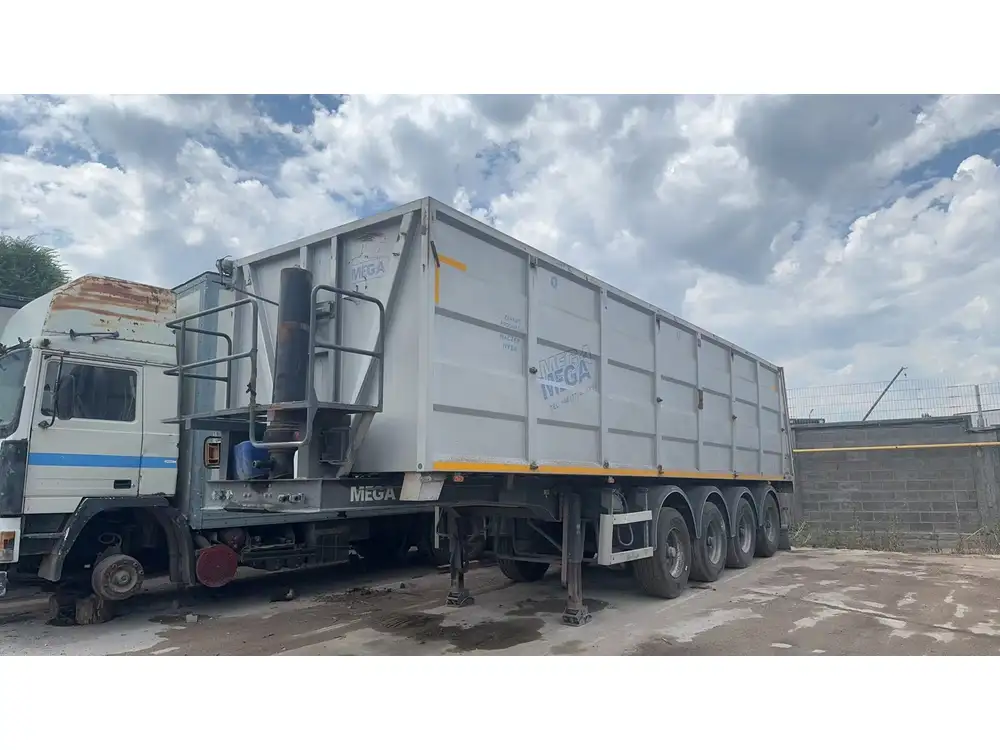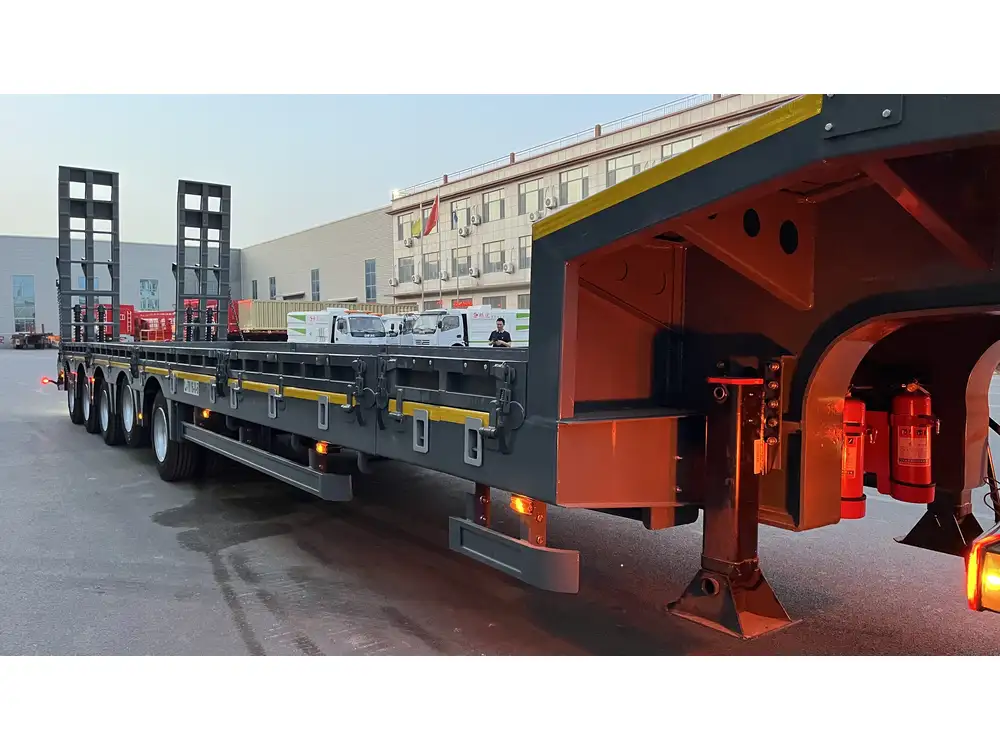Flatbed trailers are vital components of the logistics and transportation industry due to their myriad of applications and functionalities. We delve into the specifics of flatbed trailers, examining their features, advantages, and considerations for selection and use, ensuring you have all the information needed to make an informed decision.
What is a Flatbed Trailer?
A flatbed trailer is characterized by its flat, open design, lacking side walls or a roof. This structure offers the flexibility to load heavy, oversized items, making flatbed trailers indispensable in various sectors, including construction, shipping, and agriculture. With a range of styles and configurations, these trailers cater to numerous hauling needs.
Key Attributes of Flatbed Trailers
- Open Design: The absence of sides and a roof allows for convenient loading and unloading of materials.
- Versatility: Suitable for transporting a vast array of cargo, from equipment to construction materials and vehicles.
- Stability: Provides a steady platform that ensures secure transportation of goods.
- Customizable Options: Many manufacturers offer variants with additional features such as stake pockets, tie-down points, and ramps.

Types of Flatbed Trailers
Understanding the different types of flatbed trailers is crucial in selecting the one that best meets your operational requirements. Here’s a detailed comparison of the most common types available in the market:
| Type | Description | Best For |
|---|---|---|
| Standard Flatbed | A conventional flatbed trailer with no sides or roof. | General cargo transport. |
| Step Deck | Features a second deck that lowers part of the trailer’s cargo bed. | Transporting taller loads that can’t exceed height limits. |
| Drop Deck | Similar to step decks but with a continuous lower deck for better load management. | Low-profile loads & equipment transport. |
| Extended Flatbed | Offers an extended length to accommodate oversized loads. | Long materials like beams and pipes. |
| Conestoga | Utilizes a tarping system that rolls back like a covered wagon. | Weather-sensitive cargo that needs protection. |
Choosing the Right Type
Selecting the appropriate flatbed trailer involves assessing the types of loads you will carry, the dimensions, and weight specifications.
Essential Features to Look For
When selecting a flatbed trailer, certain features can enhance the efficiency and safety of your operations. Consider the following attributes:
Material Construction
Heavy-duty steel frames lend strength, while aluminum options provide lighter weight with good load capacity. Each material presents advantages depending on the expected usage and wear-and-tear levels.Weight Capacity
Ensure the trailer’s weight capacity aligns with the average loads you plan to transport. Common capacities range from 10,000 to 80,000 pounds.Loading Mechanisms
Ramps, lift gates, and hydraulic systems can significantly ease the loading and unloading process, particularly for heavy or oversized items.Tie-Down Points
A trailer equipped with ample tie-down points aids in securing loads, reducing the risk of shifts that can lead to accidents.Brand Reputation
Choose manufacturers with positive reviews and a track record for building durable, reliable trailers. Brands that offer comprehensive warranties signify commitment to quality.

Advantages of Using Flatbed Trailers
Accessibility
The open design allows for clear and straightforward access for loading and unloading from all sides, enhancing operational efficiency.Cost-Effective Shipping
Flatbed trailers can handle large and bulky cargo, thus reducing shipping costs. The ability to load in multiple ways helps optimize time efficiency.Greater Visibility
Many businesses benefit from the heightened visibility of flatbed trucks on the road, potentially enhancing brand recognition.Flexibility in Cargo Handling
Their capacity to carry various types of materials—from construction equipment to machinery—makes flatbeds adaptable, catering to multiple sector needs.Reduced Downtime
With the ability to load oversized items quickly, operational downtime is minimized, keeping projects on schedule.
Safety Practices for Flatbed Trailer Operations
Operating flatbed trailers does pose unique safety challenges. Implementing thorough safety practices can mitigate risks and ensure safe transport.
Load Securement Techniques
- Use Appropriate Tie-Downs: Ensure the use of sufficient weight-rated chains, straps, or ropes. Opt for ratchet binders that provide secure attachments.
- Distribute Weight Evenly: Position heavy items centrally and distribute weight across the trailer to maintain balance.
- Implement Load Barriers: Consider the use of stake pockets and stakes to secure loads during transport, particularly for taller or unstable materials.

Regular Inspections
Pre-trip Inspections
Regularly check tires, brakes, lights, and couplings for functionality before each trip.Post-trip Maintenance
Inspect for any residual wear or damage that might have occurred during transport.Documentation of Inspections
Keep records for legal compliance and to initiate timely repairs.
Common Applications of Flatbed Trailers
Flatbed trailers are employed across numerous industries, thanks to their versatile nature:
Construction
- Transporting Equipment: Heavy machinery and tools can easily load and unload onto flatbeds, facilitating construction projects.
- Delivery of Materials: Steel beams, lumber, and concrete blocks are just a few examples of materials moved with flatbed trailers.

Agriculture
- Transporting Harvested Goods: Farmers often use flatbed trailers to transport crops and farming materials from fields to processing centers.
- Moving Equipment: Agricultural equipment such as tractors and harvesters can be securely transported.
Commercial Shipping
- Freight Transport: Flatbeds are widely utilized for transporting pallets, containers, and bulk freight, with advanced tie-down systems ensuring load security.
Automotive
- Vehicle Transport: Ideal for hauling cars, trucks, or other vehicles, providing efficient loading and unloading options.

Cost Considerations for Flatbed Trailers
Budget considerations for a flatbed trailer entail several factors that can influence purchase decisions:
| Factor | Description |
|---|---|
| Initial Purchase Price | Costs can vary significantly based on type, materials, and load capacity. |
| Maintenance Costs | Regular inspections and upkeep will generate ongoing expenses. |
| Fuel Efficiency | The weight of the trailer and load may affect the fuel efficiency of the towing vehicle. |
| Insurance Premiums | Insurance costs can depend on the trailer’s use, value, and the owner’s driving history. |
Understanding these costs aids in establishing a comprehensive budget for maintaining efficient operations.
Conclusion
Flatbed trailers embody efficiency and functionality, addressing a myriad of transportation needs across various industries. By selecting the right type of trailer and adhering to safety practices, businesses can maximize productivity and minimize risk. The versatility of flatbed trailers, paired with their cost-effectiveness and ease of use, makes them an advantageous asset for any transport operation.
Whether you’re a contractor, farmer, or logistics manager, incorporating flatbed trailers into your operations can streamline your workflow, reassure your customers of timely deliveries, and contribute to your growth. For your flatbed trailer needs, explore our extensive selection that encompasses various styles, features, and price ranges to find the perfect fit for your business. Embrace the open road with confidence, leveraging the myriad advantages a flatbed trailer offers!



